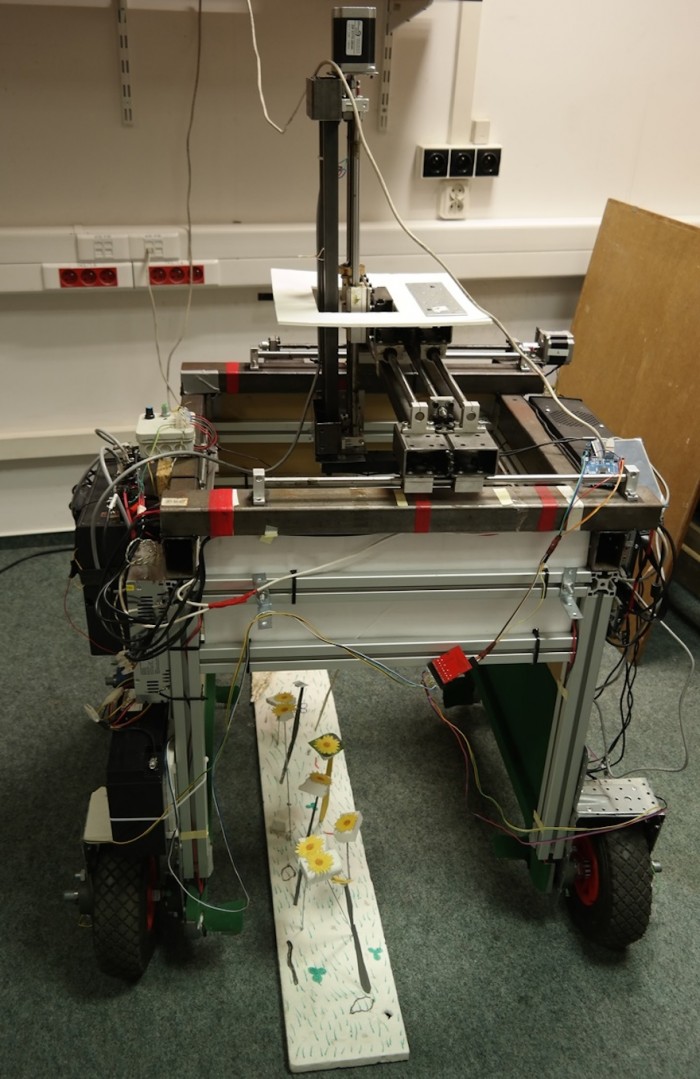The world would be a completely different place without bees. The world’s food supply relies on the important work of these insects. Bees are responsible for pollinating about one-sixth of the flowering plant species in the world and approximately 400 different agricultural types of plant. Despite their important status, mass bee deaths have been recorded worldwide, owing to environmental pollution, fungi, viruses and parasites. Researchers at Warsaw University of Technology took matters into their own hands and built a robot to help pollination: the B-Droid.
The team, led by Dr Rafal Dalewski, built two versions of the robot. The first device is a robot on wheels that carries a computer with the necessary software. This allows the robot to perform its tasks autonomously.
“The robot observes the terrain using cameras and checks the captured images for the presence of flowers in the vicinity,” explains Dalewski. By analysing the images it can create a map of the terrain and determine its own location. If it “sees” a flower, it establishes its location and prepares the data needed to reach the flower. It uses a brush to move and collect pollen from one flower to the next detected flower.
The second device is a flying robot, whose computer and software remains on the ground. It works the same as the wheeled robot, able to analyse and transfer data and plan its route once it has found its location and located some flowers.
However, as opposed to the wheeled robot, the flying B-Droid experiences more challenges in terms of navigation and consumes more energy. It can only manage a couple of minutes of flight while the rolling version manages over two hours.
The wheeled robot can also successfully pollinate garlic and strawberries. The row of garlic plants where the device worked yielded approximately 165 seeds in comparison to the area not used for testing, which only yielded 23 seeds. The seeds yielded by the B-Droid were also six per cent heavier, which means that they are of greater quality.
Last year we reported on the RoboBees created by Harvard University researchers. These tiny robotic bees are able to perch mid-air using a small electrical charge. Greenpeace contested the creation of robotic pollinators, saying that researching possibilities to replace the bee population is not the solution.
“Greenpeace is in favour of tackling the problem at its roots: banning pesticides, which harm bees and pollinators and switch from industrial agriculture towards ecological farming to preserve the environment, biodiversity, bees and other pollinators,” says Christine Gebeneter, Communications Coordinator for the European Ecological Farming Project, Greenpeace.
Bee deaths are a threat to global food supply and action needs to be taken to save them from mass extinction. As helpful as it may seem, the creation of possible replacements for bees could be a step in the wrong direction.






